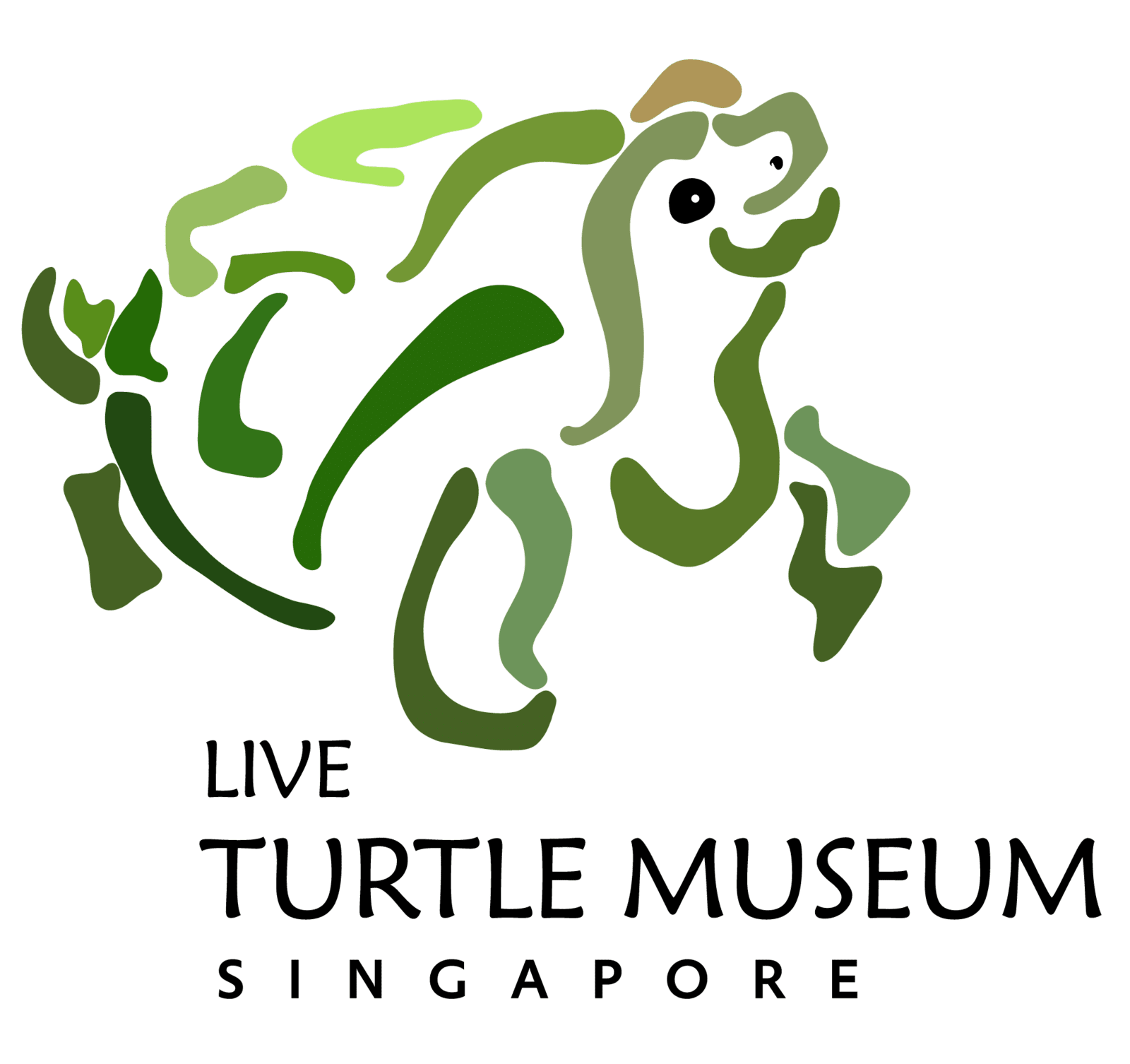Aldabra Giant Tortoise
(Aldabrachelys Gigantea)
This species is originally from the Aldabra Atoll, located in the Indian Ocean, with a population of over 150,000 wild tortoises. It has also been introduced on the Seychelles, & on other islands including Reunion, Mauritius & Zanzibar. It is mainly vegetarian & feeds on grasses & leaves of low-lying plants.
Habitat
Vegetation is scarce in this dry & inhospitable land on the Aldabra Atoll Seychelles archipelago, & the tortoises mainly live in mangrove forests, where they find both shade & shelter, & areas close to the large central lagoon, covered by large extensions of grass.

What I do when I'm not in the museum
The Aldabra Tortoise is an early riser & is most active during the daytime. It starts its morning by looking for food in the open expanses of grasslands or searches for dead/decaying matter in swampy marshes. This species engages in a number of activities like mating, eating, sleeping, stretching, walking. While lumbering around, with their heads lowered, they closely crop the grass & other vegetation with their powerful jaws, leaving a tell-tale path where they have grazed upon. They can be found both individually or in herds where plenty of food is present.
| Weight 160-250kg | Lifespan Up to 180-200 years |
| Size 90cm-140cm | Diet Vegetables & Fruits |
Burmese Star Tortoise
(Gechelone Platynota)
The Burmese Star Tortoise earns its name from the radiating star shaped pattern which radiates throughout its beautifully adorned carapace as well as the fact that it originates from Burma. It is an extremely rare species which has been listed as critically endangered due to the fact that it has been hunted down for food & commercialisation in Chinese markets. They are primarily vegetarian but are known to indulge in insects & larvae for their protein needs.

Habitat
The Burmese Star Tortoise resides mainly in the edges of the forests of Burma, Myanmar to Moulmein in the South where it is often times dry. The star shaped patterns which it adorns on its dark carapace serves as excellent camouflage in its habitat where it dwells on the forest floor among leave litter and low lying vegetation in the area.
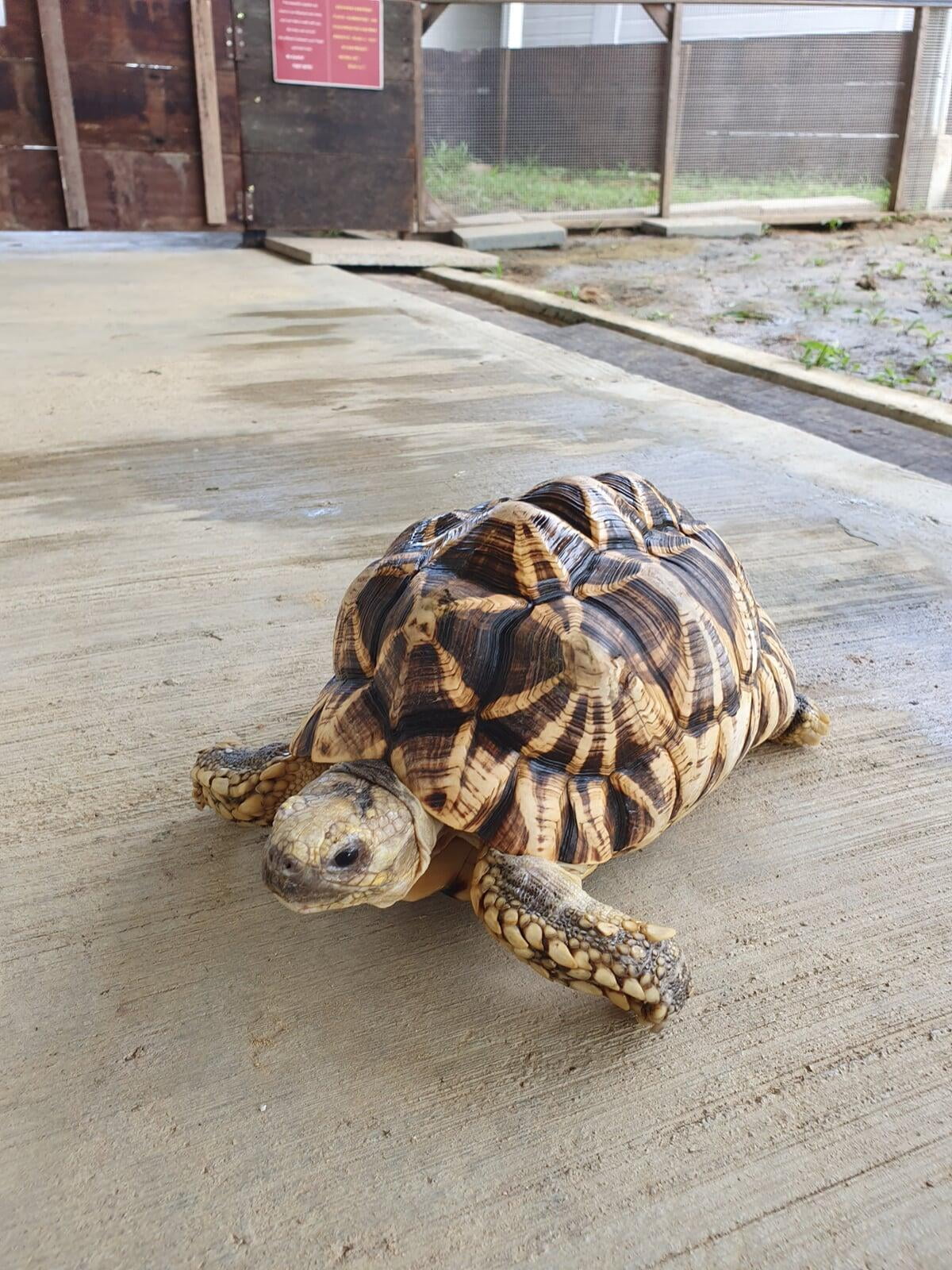
What I do when I'm not in the museum
While not much has been studied of the Burmese Star Tortoise, certain observations have been made of its behaviour in the wild. A diurnal species which spends most of its day foraging for food including vegetation, fruit as well as insects in low lying terrain, the Burmese Star Tortoise have been noted to be rather active & personable animals that do not hibernate nor dig burrows. They will however take shade in the shrubs and bushes which surround its low lying environment.
| Weight Up to 20kg | Lifespan Up to 50 years |
| Size Up to 40cm | Diet Vegetables & Fruits |
Indian Star Tortoise
(Geochelone Elegans)
As its name suggests, the Indian Star Tortoise earns its name from the star shaped pattern adorned on its domed shell. Radiating bright yellow markings on the scutes of their carapace, this petite sized tortoise originates from the dry & arid forests of India & Sri Lanka. A sheer beauty to behold, this has however made the Indian Star Tortoise a prized target for the exotic pet trade which has caused wild populations to suffer in numbers.
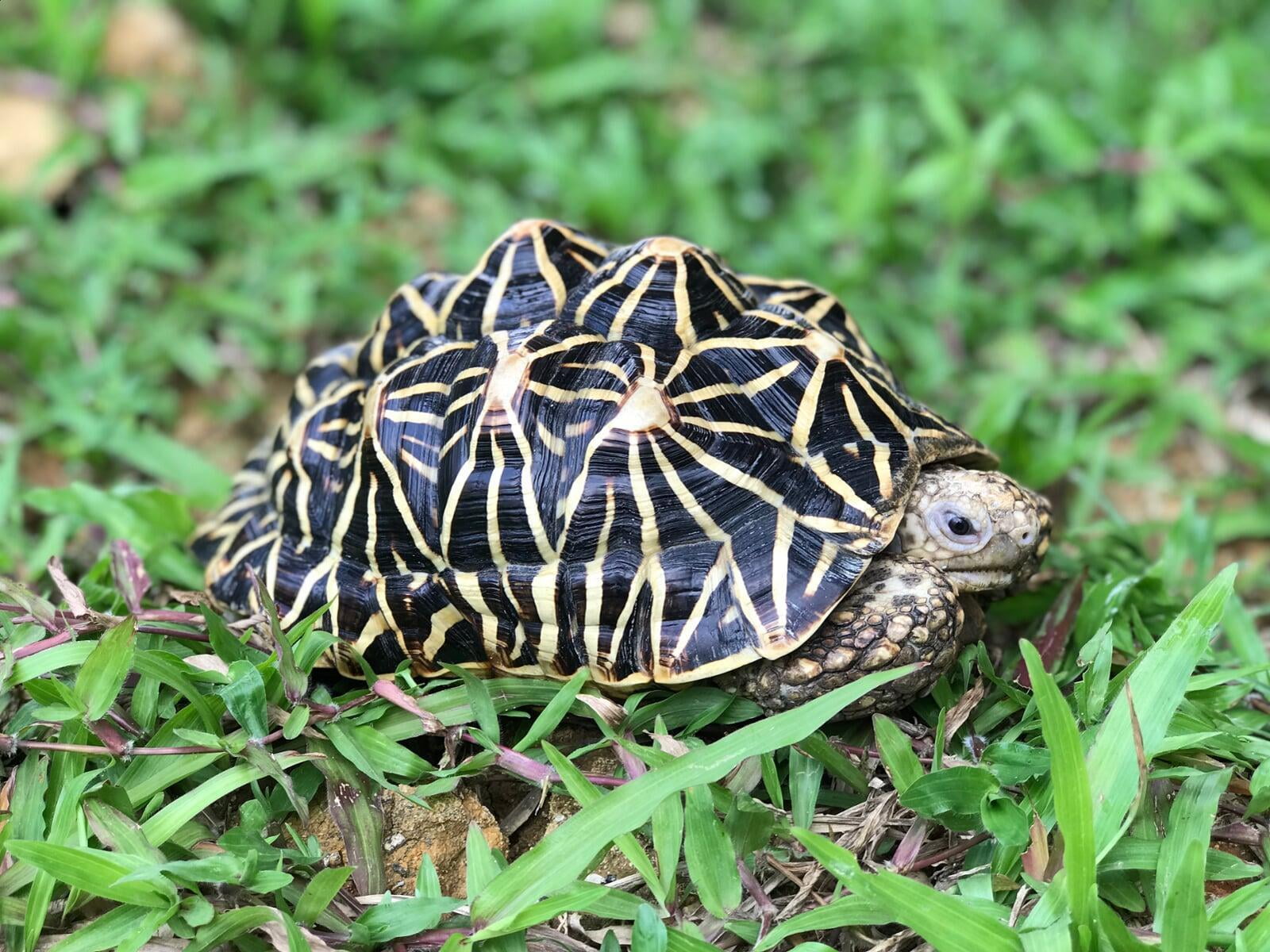
Habitat
Indian Star Tortoises originate from a wide range in India where many dwell in semi-desert grasslands & moist deciduous forests. They can be found mainly in dry scrub forests where they experience a distinct dry & wet season. In this habitat, the Indian Star Tortoise thrive on a purely vegetarian diet where they consume a variety of plant matter from leaves, fruits & berries which can be found in these arid environments.
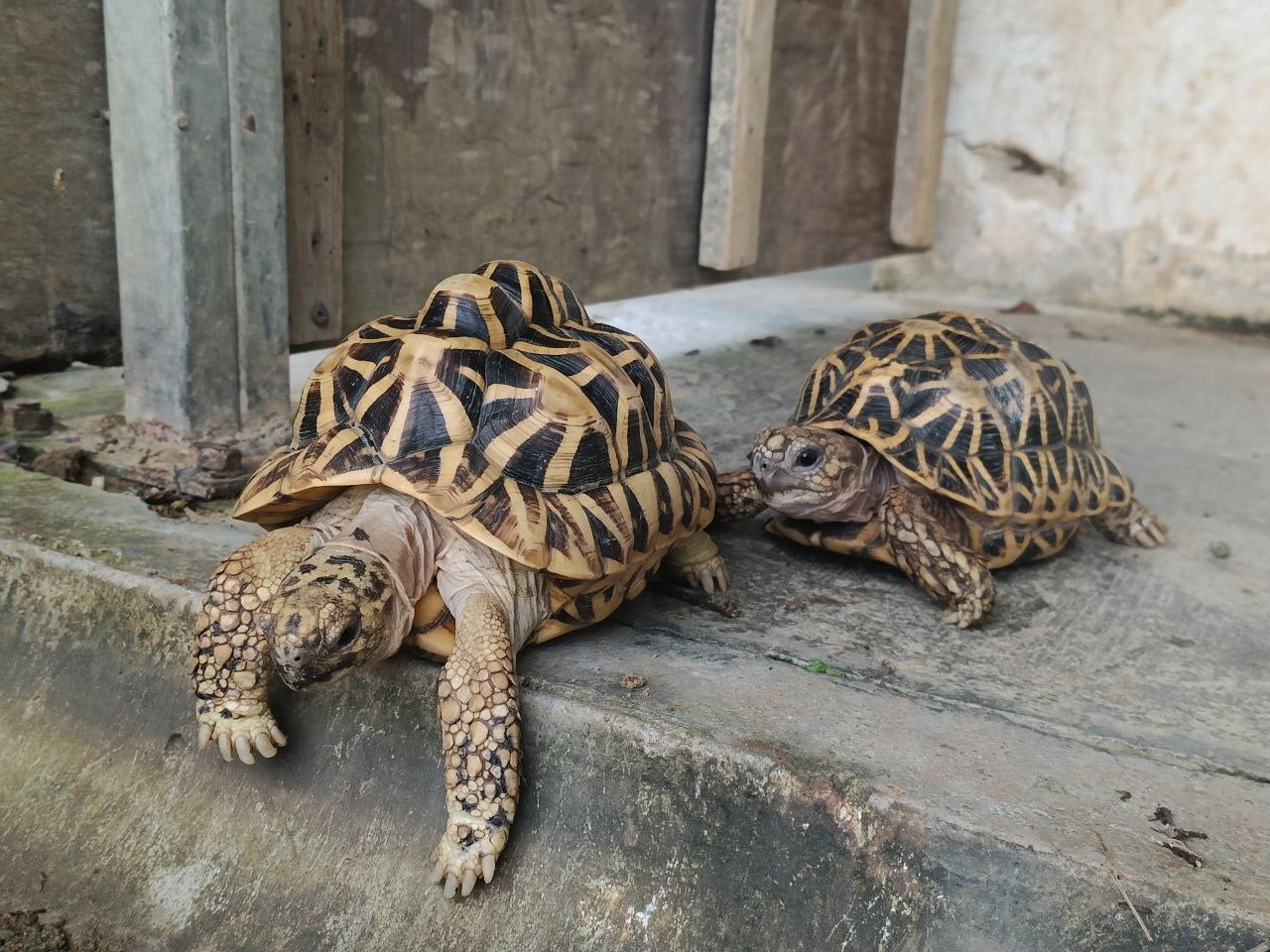
What I do when I'm not in the museum
| Weight Up to 2kg | Lifespan Up to 80 years |
| Size Up to 30cm | Diet Vegetables, Fruits |
Sulcata Tortoise
(Centrochelys Sulcata)
The African Spurred Tortoise or Sulcata Tortoise is the largest tortoise of the African mainland and is surpassed in size only by the giant island species of Aldabra & Galapagos. A desert dwelling reptile with a sandy coloration, the African Spurred tortoise earn their name from the distinguishing spurs located on their front legs which they use to burrow deep into the ground of the Saharan deserts they inhabit.
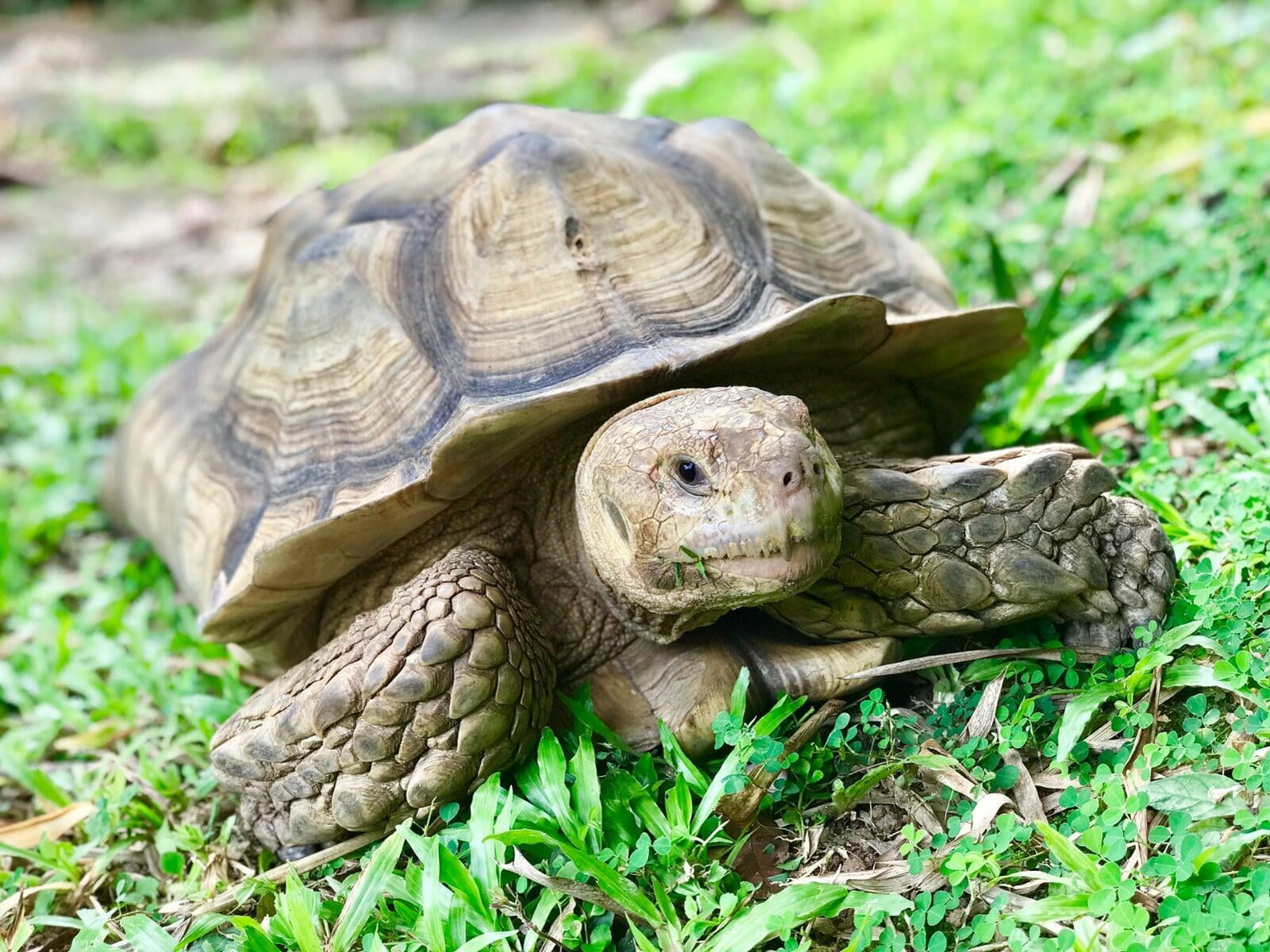
Habitat
Native to the Sahara Desert and arid regions including Ethiopia, Nigeria, Senegal & Sudan, these tortoise are excellent burrowers who spend the hottest part of the day deep underground to access areas with high moisture. Feeding primarily on a diet of succulent plants rich in water such as cactus pads, these tortoises can go long periods without the need for a drink as they get most of their hydration needs from the plants they eat.
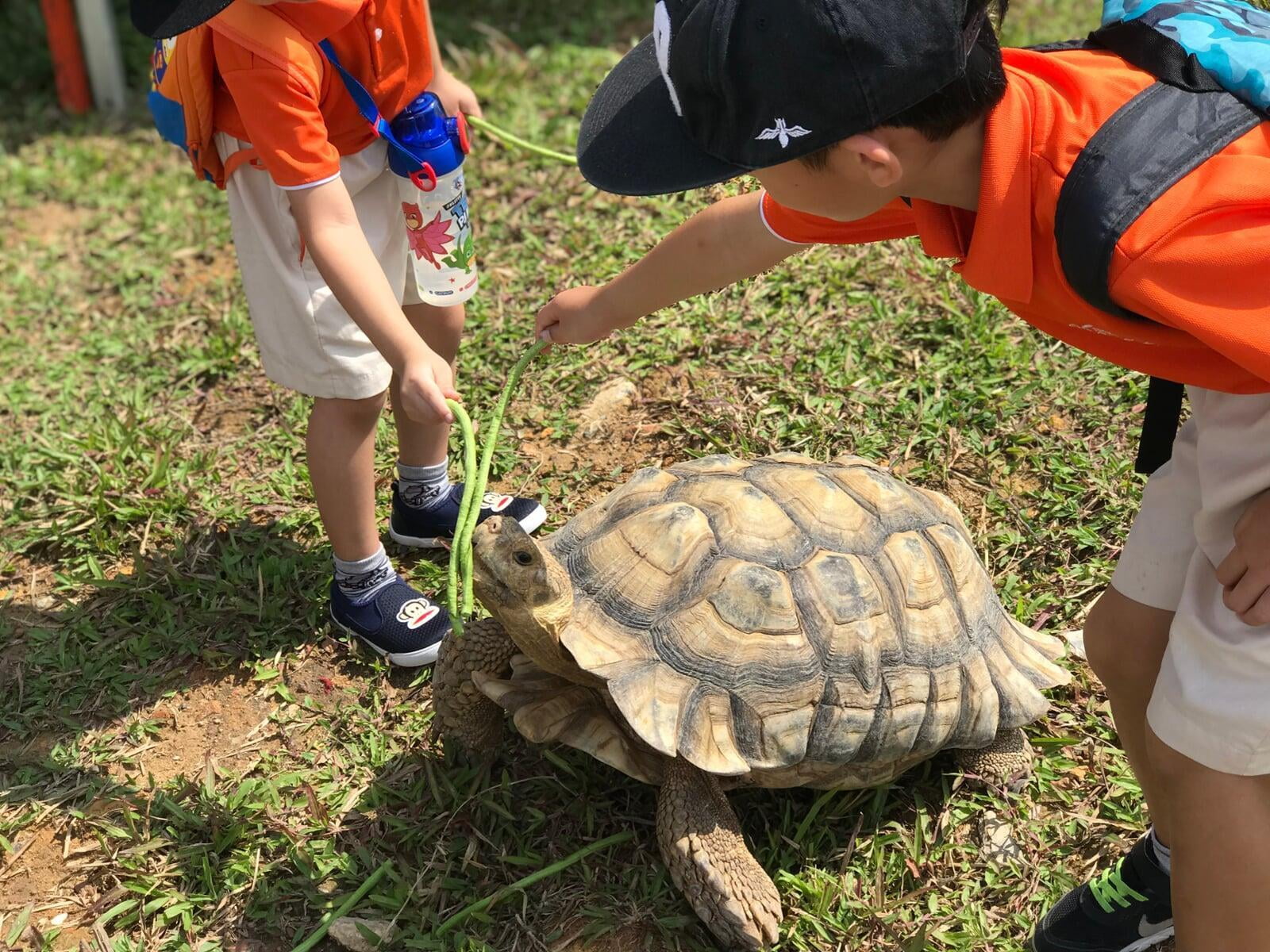
What I do when I'm not in the museum
Males among the species regularly engage in combat, ramming & even biting each other for the right to mate with a female. They are generally vocal during copulation, bellowing loudly in a grisly tone as they mount their mates. Being the lumbering giants that they are, Sulcatas move rather slowly as they drag their enormous weight across the Saharan desert.
| Weight Up to 90kg | Lifespan Up to 80 years |
| Size Up to 90cm-120cm | Diet Vegetables & Fruits |
Red-Footed Tortoise
(Geochelone Carbonaria)
Red Footed Tortoise hail from the exotic Amazonia of South America. With distinctive red markings throughout its body & lightly tinged scutes which contrast its dark limbs & carapace, this medium sized tortoise can be found foraging throughout the savannah & forests edge of the Amazon Basin feasting on a diet of primarily plants & fruit while occasionally enjoying a protein rich snack including carrion & invertebrates.
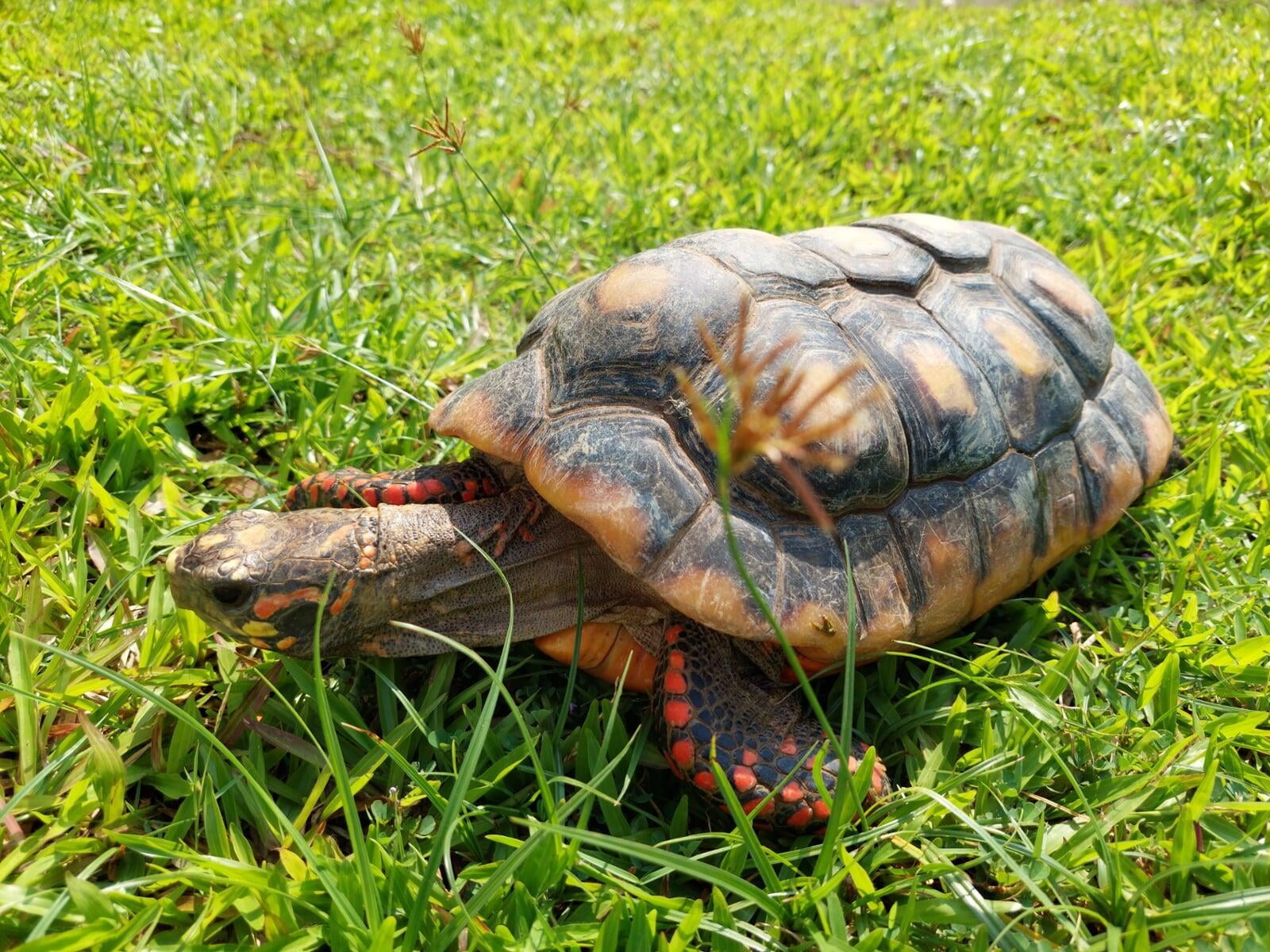
Habitat
Most tortoise species are inactive for much of their day, and red-footed tortoises typically spend more than 50% of their daylight hours resting. After a large meal they may rest even longer, commonly for five to ten days. They seek shelter where there is protection from predators as well as thermoregulation. Shelters are often communal, occupied by as many tortoises as will fill the space.
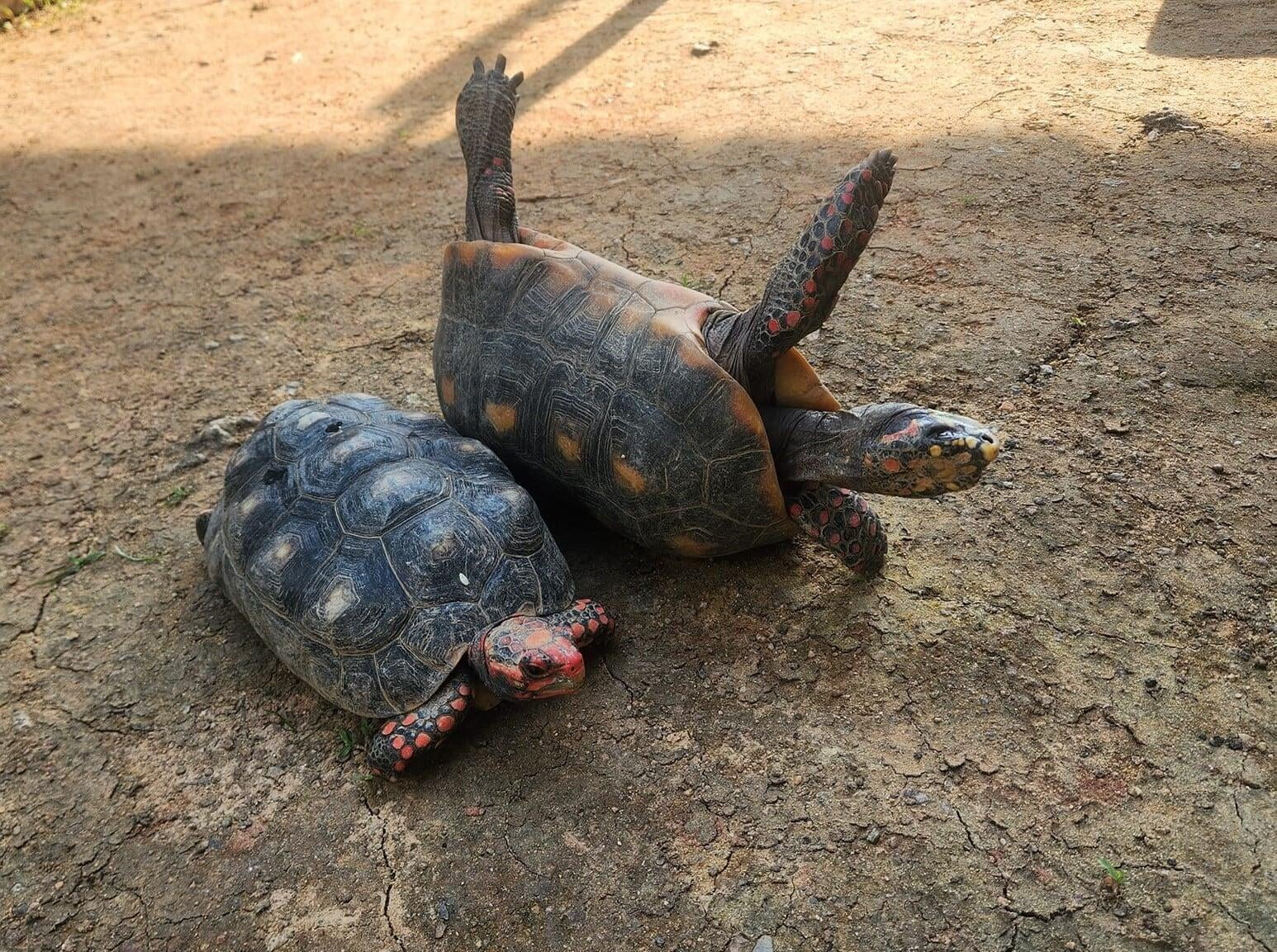
What I do when I'm not in the museum
They tend to gather in small social groups, sharing food among each other & are not exceedingly territorial unless competition for a suitable mate is involved. Head bobbing & similar movements have been observed among tortoises as a form of communication. Variations of this particular species exist as seen in the smaller Cherry Head Tortoises as well as its relative, the Yellow Footed Tortoise.
| Weight Up to 9kg | Lifespan Up to 50 years |
| Size Up to 34cm | Diet Vegetables, Fruits, Carrion |
Yellow-Footed Tortoise
(Chelonoidis Denticulatus)
Like the Red Footed Tortoise, the Yellow – Footed tortoise is a highly personable & attractive animal that occurs throughout the rainforests of South America. They are distinguished by the yellow scales on their front legs and a carapace which is coloured light golden brown. They are also known as the Brazilian giant tortoise and are the largest among three species of mainland tortoises found in South America.
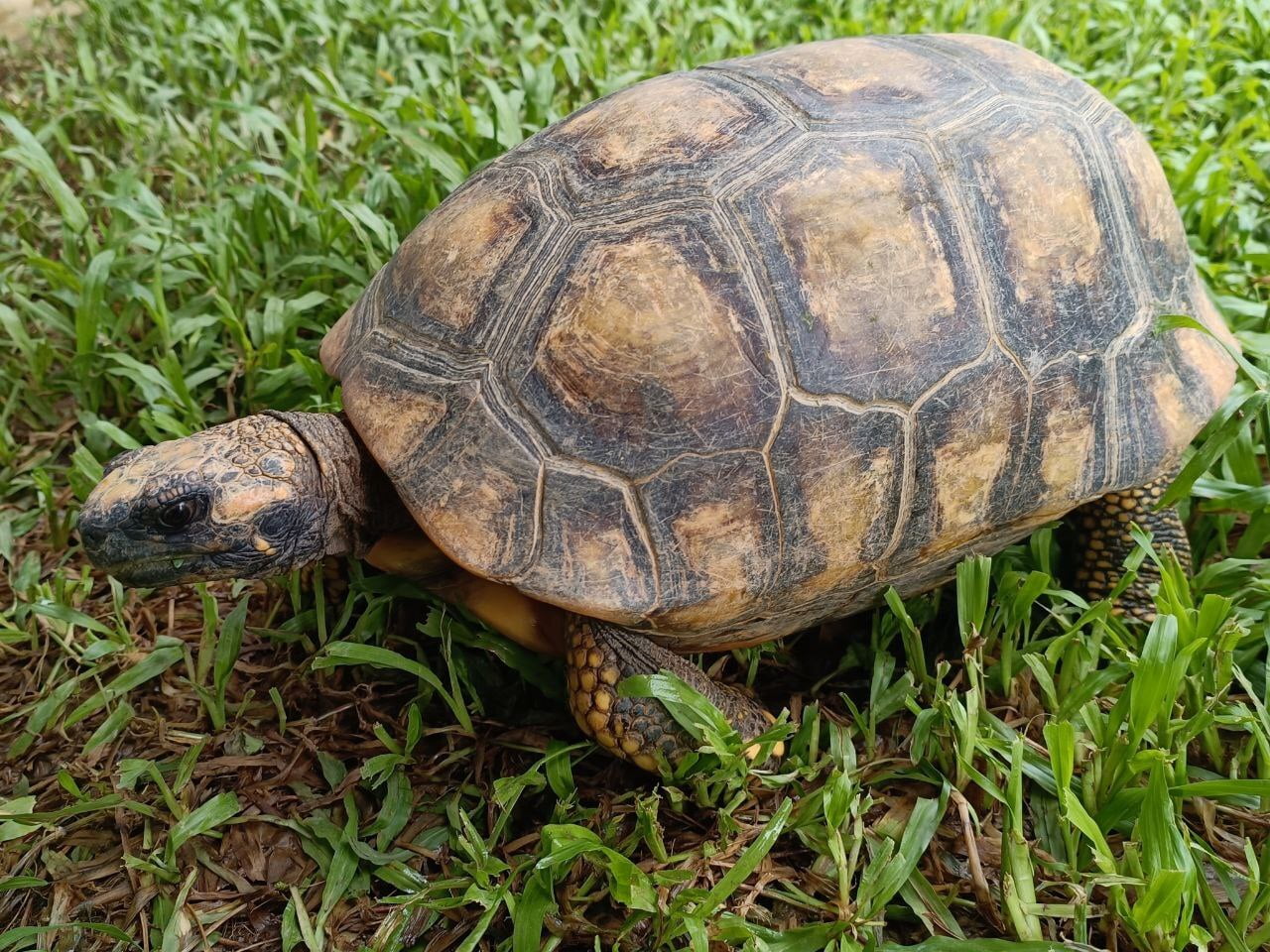
Habitat
Yellow-footed tortoises are found in the depths of the tropical rainforests of southern Colombia, Ecuador, Peru, Venezuela, Guyana, Brazil & Bolivia where they spend most of their time around shallow water & feast on leaves and the undergrowth. Naturally, these animals prefer tropical lowlands & dense rainforests where they occasionally feast on carrion to necessitate their protein intake.
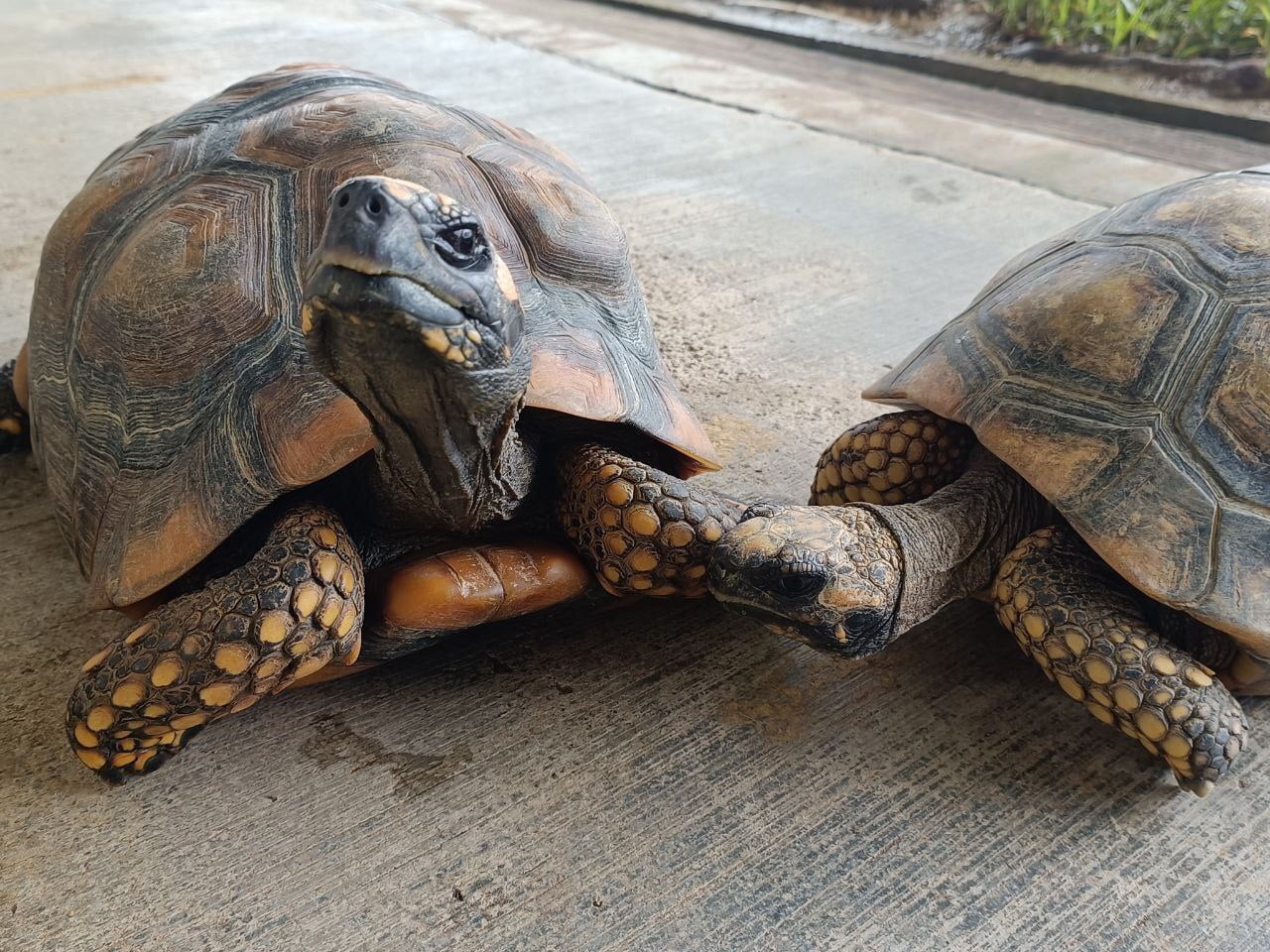
What I do when I'm not in the museum
| Weight Up to 12kg | Lifespan Up to 50 years |
| Size Up to 45cm | Diet Vegetables, Fruits, Carrion |
Asian Brown Tortoise
(Manouria Emys)
The Asian Brown Tortoise is one of the oldest tortoises in the world, having evolved very little over millions of years. They mainly dwell in forests throughout Asia, including India, Malaysia, Indonesia, Myanmar, Thailand & Vietnam. The species is known to be mainly vegetarian, foraging on grass, fruits & other low lying vegetation while occasionally feasting on protein. They are also known as the 6-footed tortoise due to the hinds they have behind their back legs that make it look like an extra pair of legs!
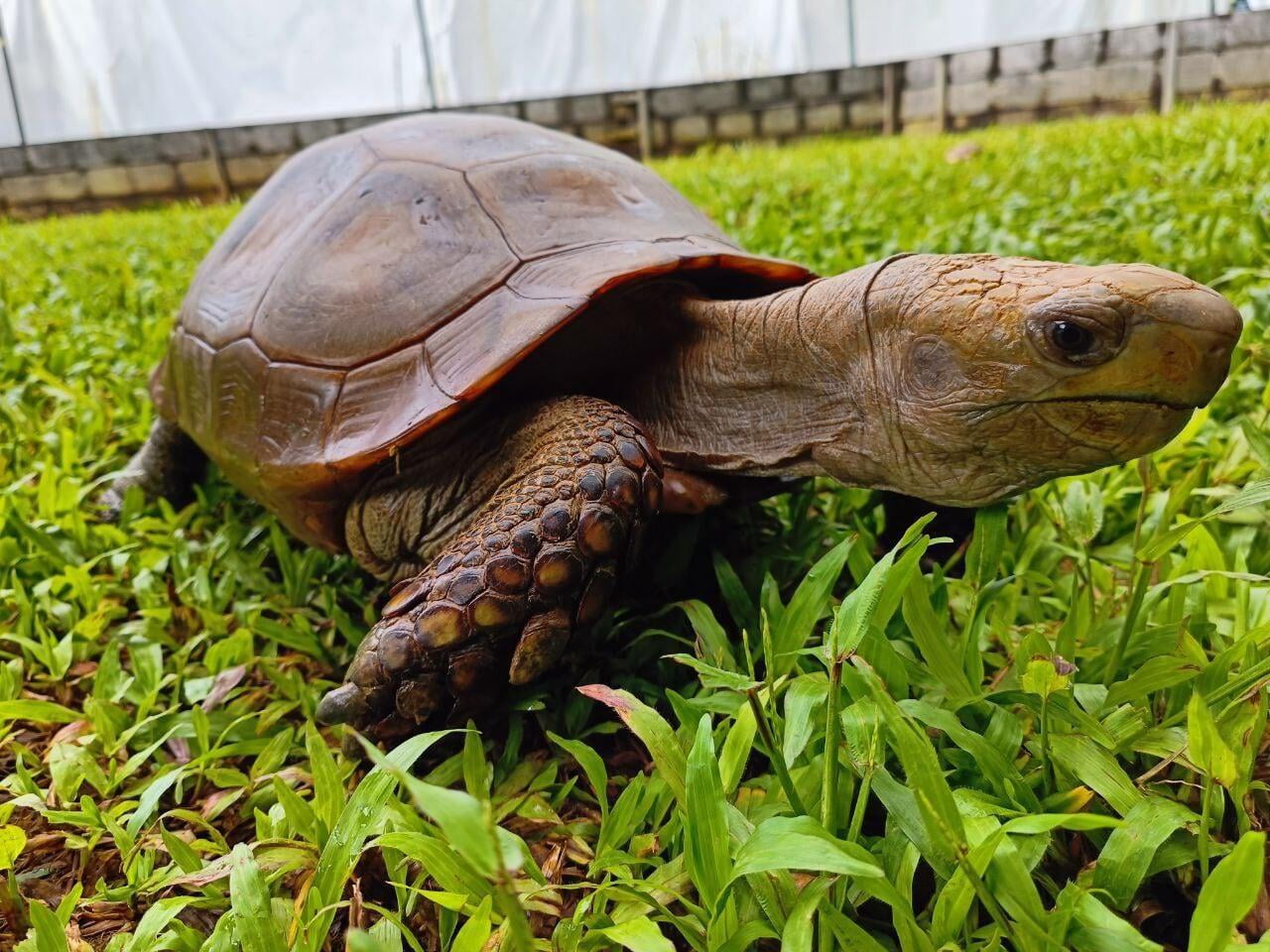
Habitat
The Asian Brown Tortoise mainly resides in the tropical rainforests of Asia where humidity is high due to regular rainfall & the monsoon seasons. Their habitat commonly involves a body of water in which the tortoise can regularly be found soaking itself in when it is not soaking in the rays of the sun which filter through the canopy of the tropical forests it resides in.
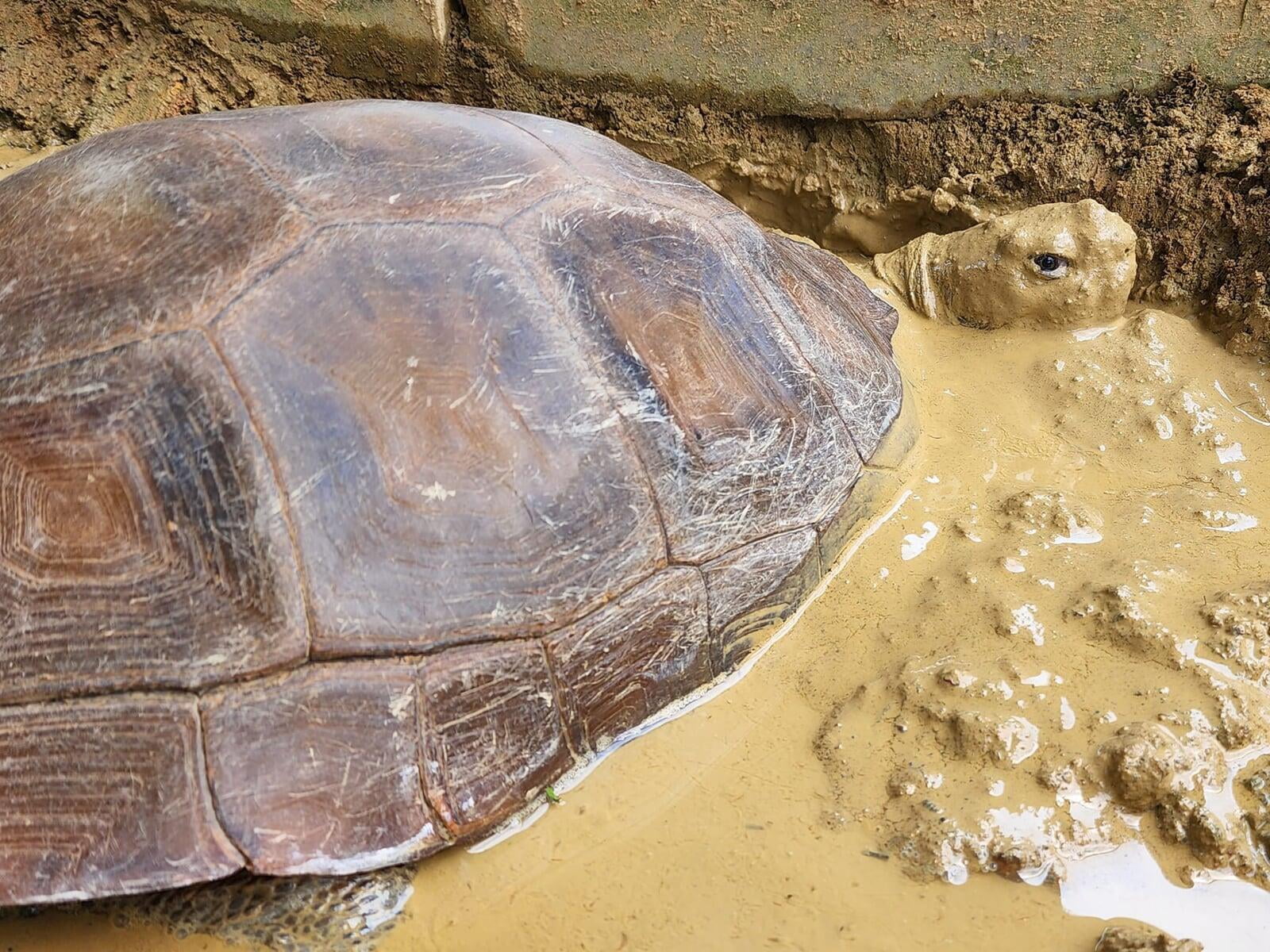
What I do when I'm not in the museum
Communication among Asian Brown Tortoise normally involves head bobbing displays & the occasional growling between members of the species. While they have been observed to be social at times, the mating season often involves shoving among males as they demonstrate their courting ritual to suitable females. Females have also been noted to rely on their environment to craft intricate nests to lay their eggs & have been found to exhibit ferocious defensive displays towards potential predators which threaten their nests. On a typical day, Asian Brown Tortoises regularly rise early to soak in the morning sun before moving on to graze or on low lying plants, or dig in the mud to cool down. So you might find them catching a mud bath once in a while!
| Weight Up to 9kg | Lifespan Up to 50 years |
| Size Up to 34cm | Diet Vegetables, Fruits, Carrion |
Radiated Tortoise
(Astrochelys Radiata)
“The world’s most beautiful tortoise” is a nickname which has followed the Radiated Tortoise since its discovery on the island of Madagascar. Predominantly yellow in appearance with elephantine feet & a blunt head, the Radiated Tortoise earns its name from the finely detailed “star shaped pattern” which radiates of its dome shaped carapace. Due to the elegant nature of these animals, they fetch a high price for animal smugglers & poachers looking to churn a profit. Locals have additionally been known to gift Radiated Tortoise as wedding presents while others have adopted them as pets from the wild.
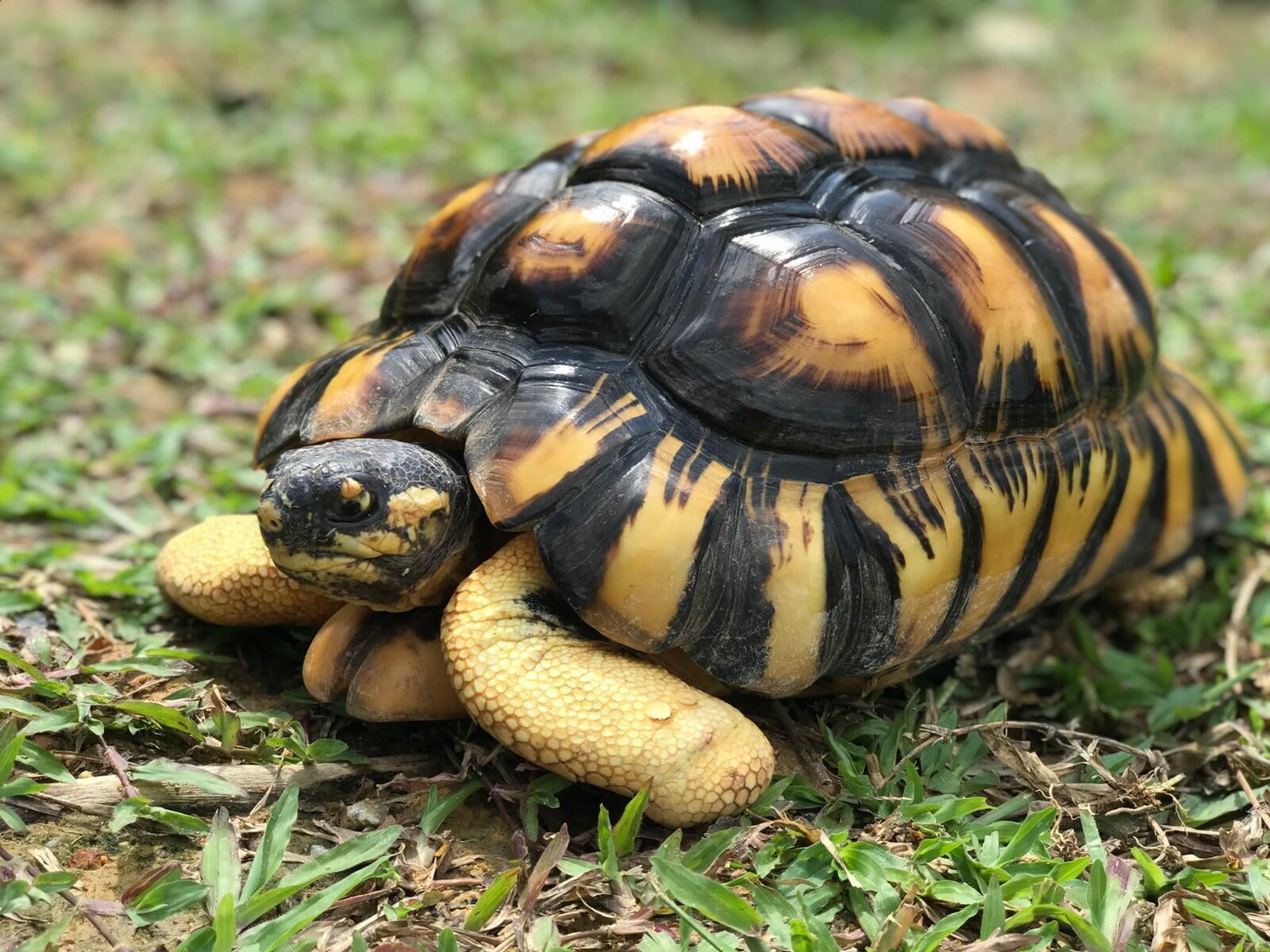
Habitat
These reptiles are primarily herbivores, normally found grazing on grass, low lying plants & fruit in the Southern areas of Madagascar, all the while preferring to live solitary, peaceful lives in a habitat devoid of predators such as dry regions of brush, spiky thorn forests as well as woodland areas which additionally serve as a means of shelter & protection.
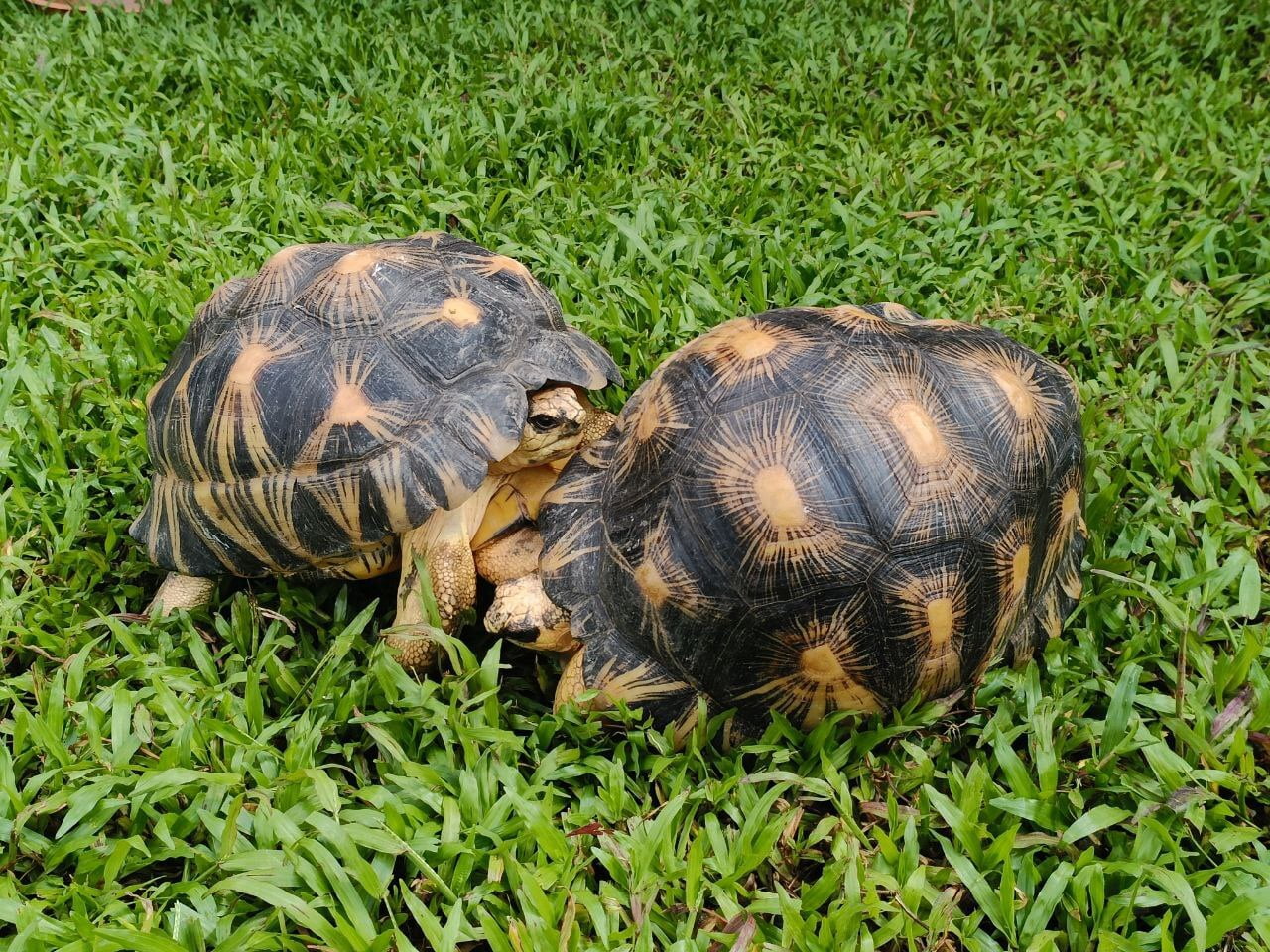
What I do when I'm not in the museum
The species drinks gallons of water to avoid long periods of dehydration. In fact, according to a particular study, the Radiated tortoise shows aggregation behavior during the wet season at discrete sites. They are generally a very social species, but during mating seasons, they still do get territorial. So they might have some arguments with one another sometimes!
| Weight Up to 16kg | Lifespan Up to 50 years |
| Size Up to 40cm | Diet Vegetables, Fruits, Carrion |
Elongated Tortoise
(Indotestudo Elongata)
The Elongated Tortoise, also known as the Yellow Tortoise due to its coloration is a medium sized tortoise originating from various parts of South East Asia as well as India. While its coloration & pattern vary throughout individual specimens, they are commonly found to be sporting a pale yellowish tan with males easily distinguished during the breeding season with a unique pink coloration around its nose.
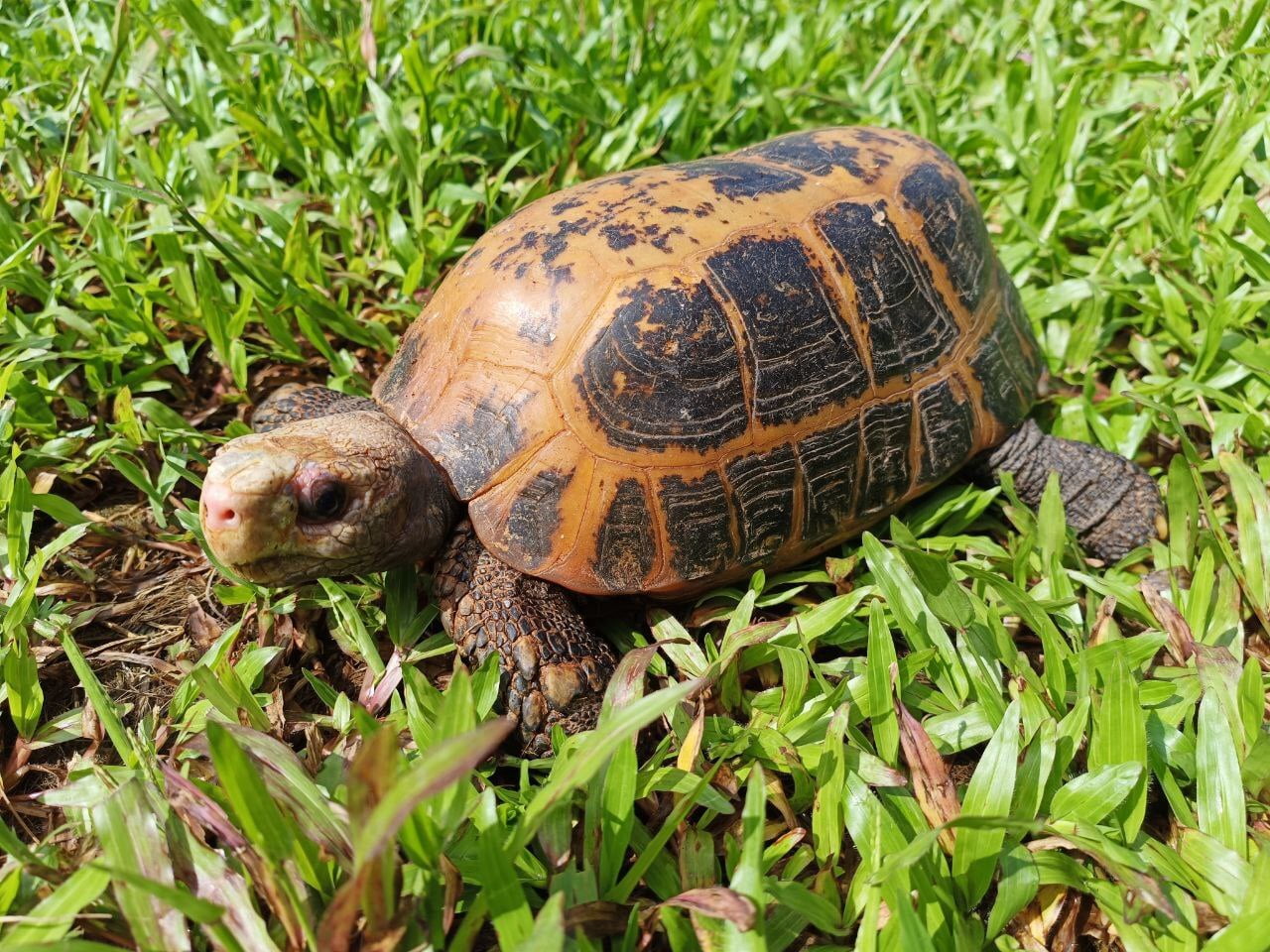
Habitat
The Elongated Tortoise occur naturally in tropical forests throughout Asia where they spend most of their time foraging for food including slugs as well as plant matter due to its omnivorous nature. They can be found in a variety of habitats from dry to humid which in turn influences their basking behaviour. These include the tropical rainforests of Southeast Asia as well as parts of northeast India, Bangladesh, Cambodia, Laos, Myanmar, Nepal, Vietnam, Thailand & Malaysia.
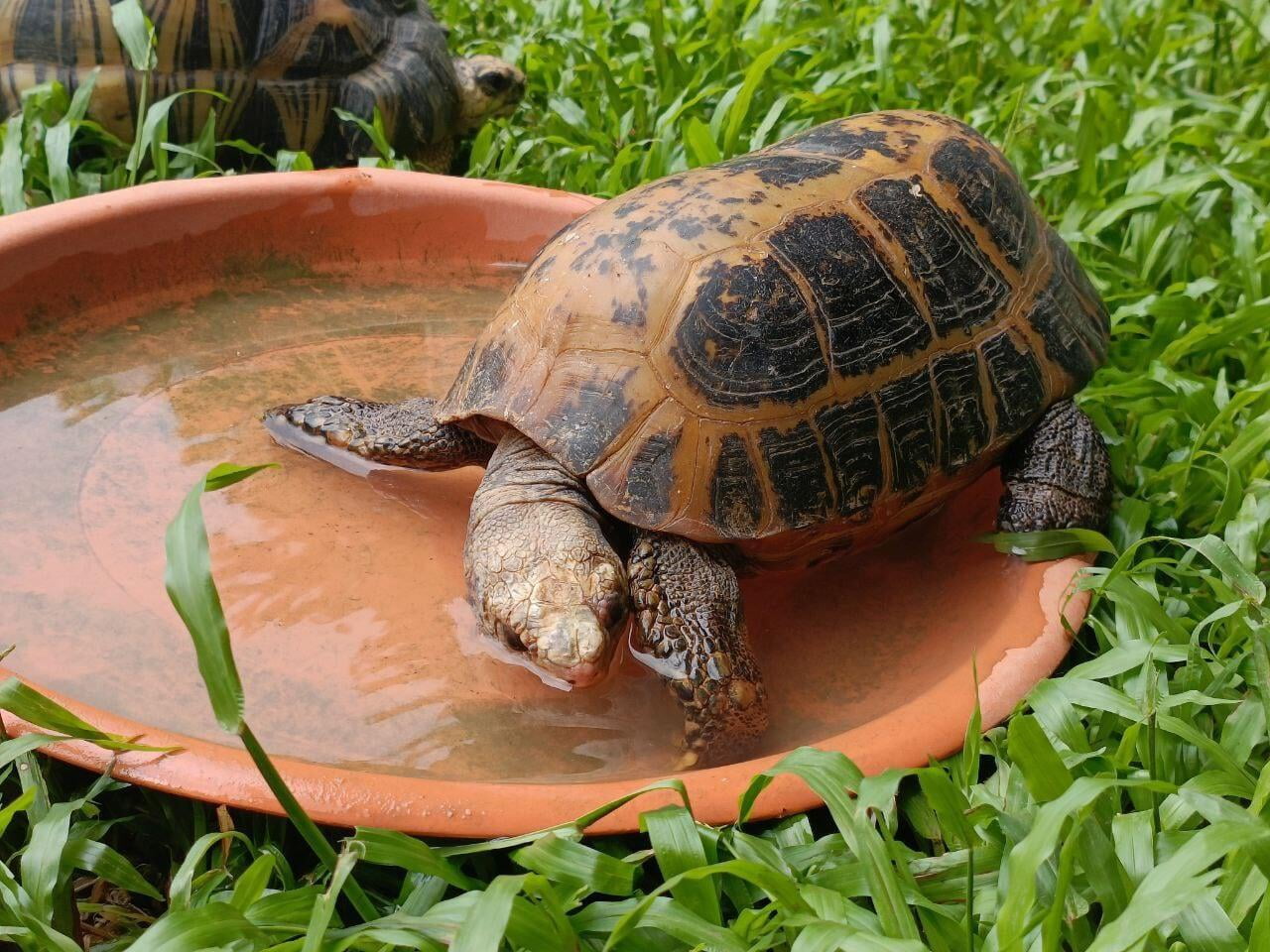
What I do when I'm not in the museum
| Weight Up to 3.5kg | Lifespan Up to 20 years |
| Size Up to 40cm | Diet Vegetables, Fruits, Insects |
Travancore Tortoise
(Indotestudo Travancorica)
A forest dwelling species, the Travancore tortoise is a medium sized tortoise native to the highlands & mountains of the Western Ghats in southwest India. It occurs naturally in evergreen, moist deciduous & bamboo forests as well as in rubber & teak plantations near streams & marshes. They are mostly active during the early part of the rainy season which coincides with their breeding cycle.
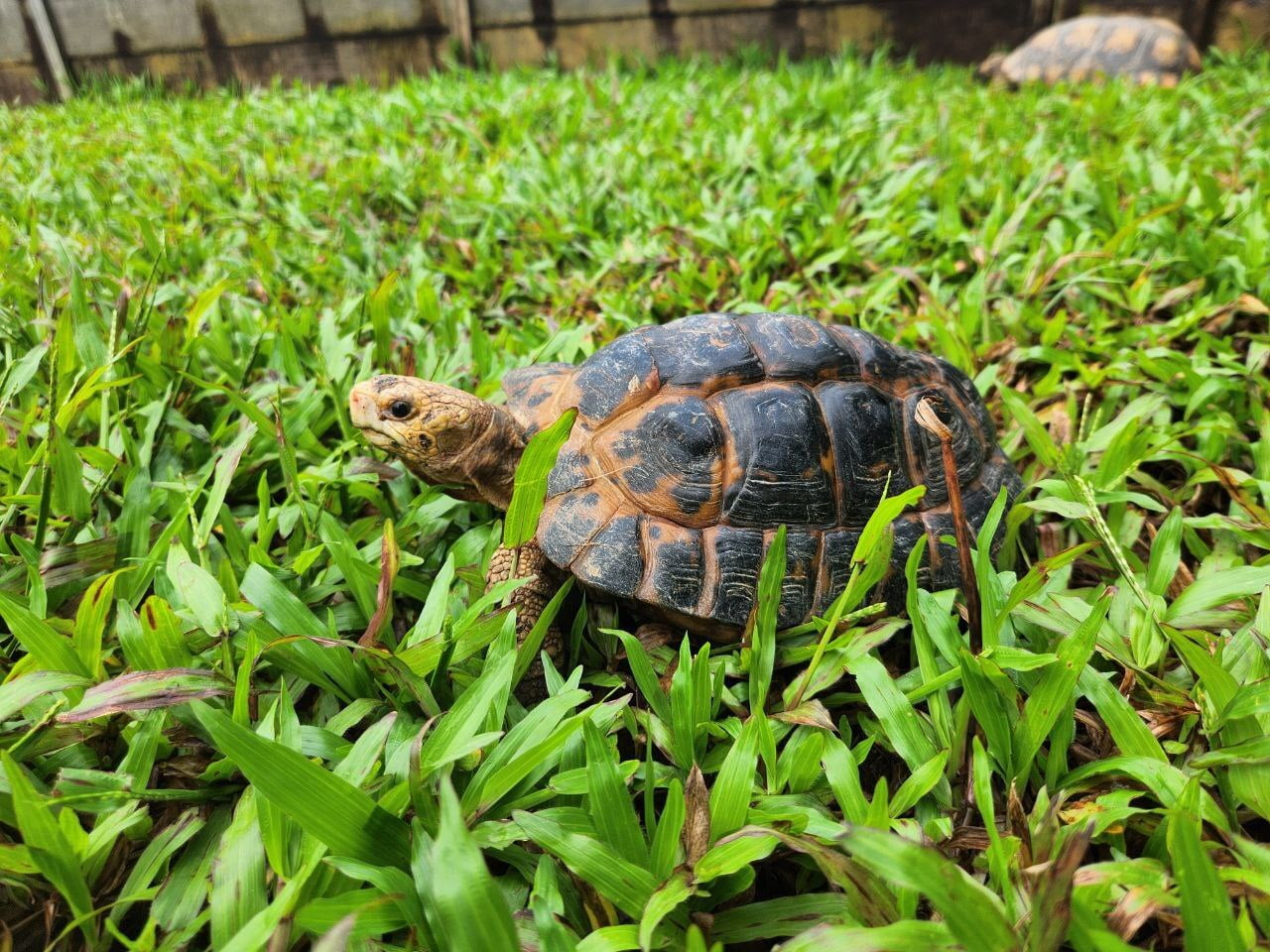
Habitat
They can be found foraging on the forest floor of India in the higher regions where elevations are of 100 to 1,000 meters above sea level. These forests provide them with the nutrition, food and water that they will need to thrive.
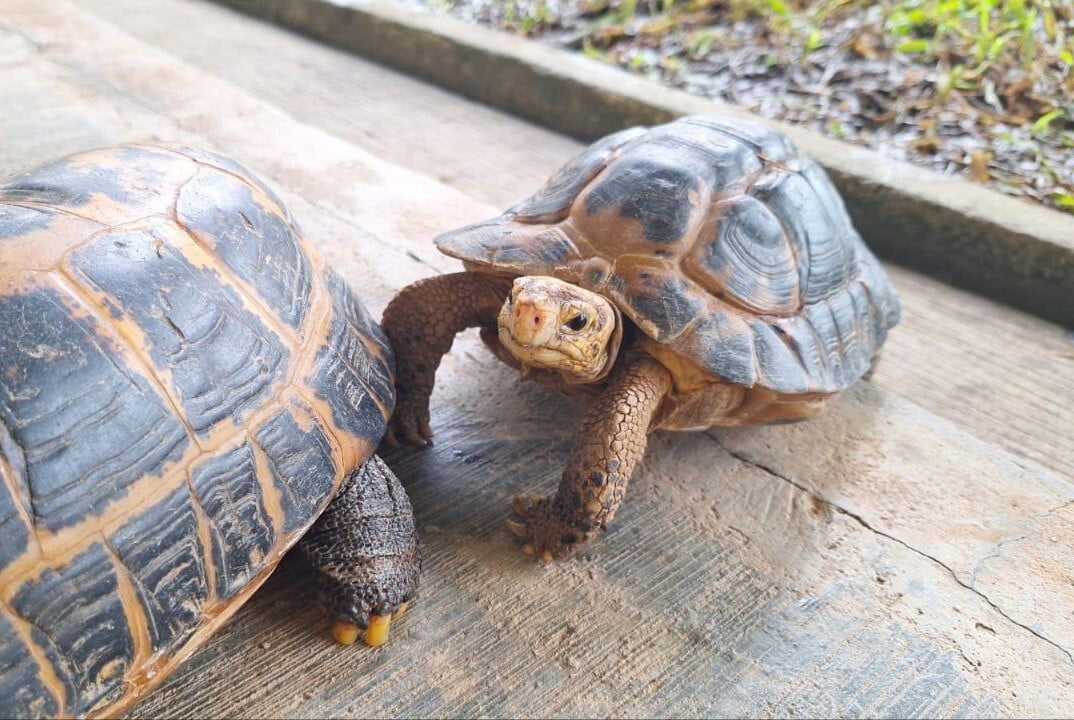
What I do when I'm not in the museum
| Weight Up to 3kg | Lifespan Up to 30 years |
| Size Up to 30cm | Diet Vegetables, Fruits, Insects |
